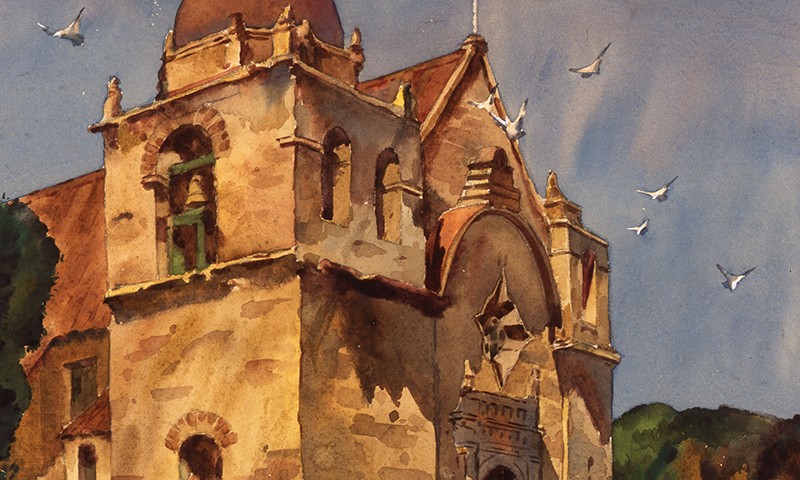 |
Detail of Untitled (The Carmel Mission), 1949
Arthur Edwaine Beaumont (English-born American, 1890-1978); Carmel, California
Watercolor and tempera on paper; 15 x 12 in.
96.65.1
Gift of Rae and Sandra Young |
Bombshell Artist
The Bowers Blog has previously examined the works of the English-born American artist, Arthur Edwaine Beaumont, looking at his time as the official artist for the bomb tests in Bikini Atoll and later on his painting of Los Angeles’ little-known China City. The varied array of subjects painted by Beaumont illustrates that he had many loves, but his favorite subject—the one he always returned to—was the sea. The focus of this post is not located far from coastal waters: Carmel-by-the-Sea’s Mission San Carlos Borroméo del Río Carmelo.
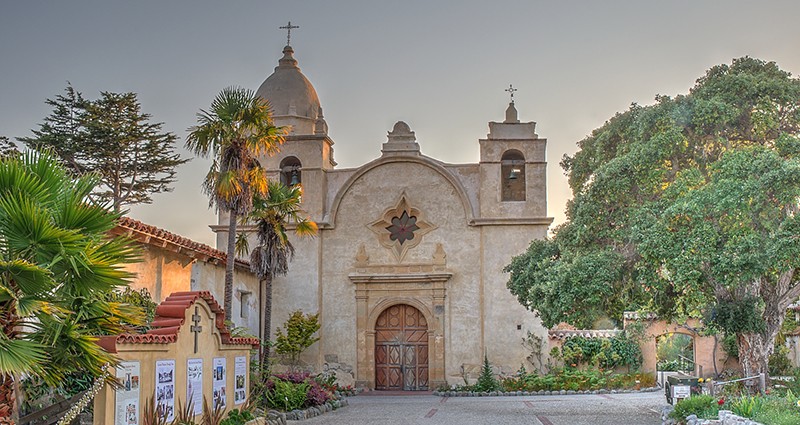 |
| Mission San Carlos Borromeo del río Carmelo today |
New Home by the Sea
Fitting to the subject of this post, Beaumont’s painting career first begins to take shape in California. In the early years of the 20th Century, a young Arthur Edwin Crabbe’s passion for drawing met with an unscrupulous impetus to flee Canada, and he changed his name and travelled South to study painting at the University of California at Berkeley. In the 1910s and ‘20s he learned the same fundamental lessons about watercolors as the other prominent California Scene painters, and in doing so entered a lifelong marriage with the medium. In the latter half of the 1920s he briefly taught at Los Angeles’ Chouinard Art Institute, a mecca for the prophets of early-mid Century American Impressionism. The following decade saw Beaumont join the US Navy Reserve where he would go on to aid the war effort using the tools best known to him: his brush and paints. His paintings captured a sense of drama and urgency that black and white photographs could not, and he worked as a documentarian and an adman. Almost always painting from the deck of ships, it was likely during his time at sea depicting the minute details of our hulking fleets that he fell so in love with the ocean.

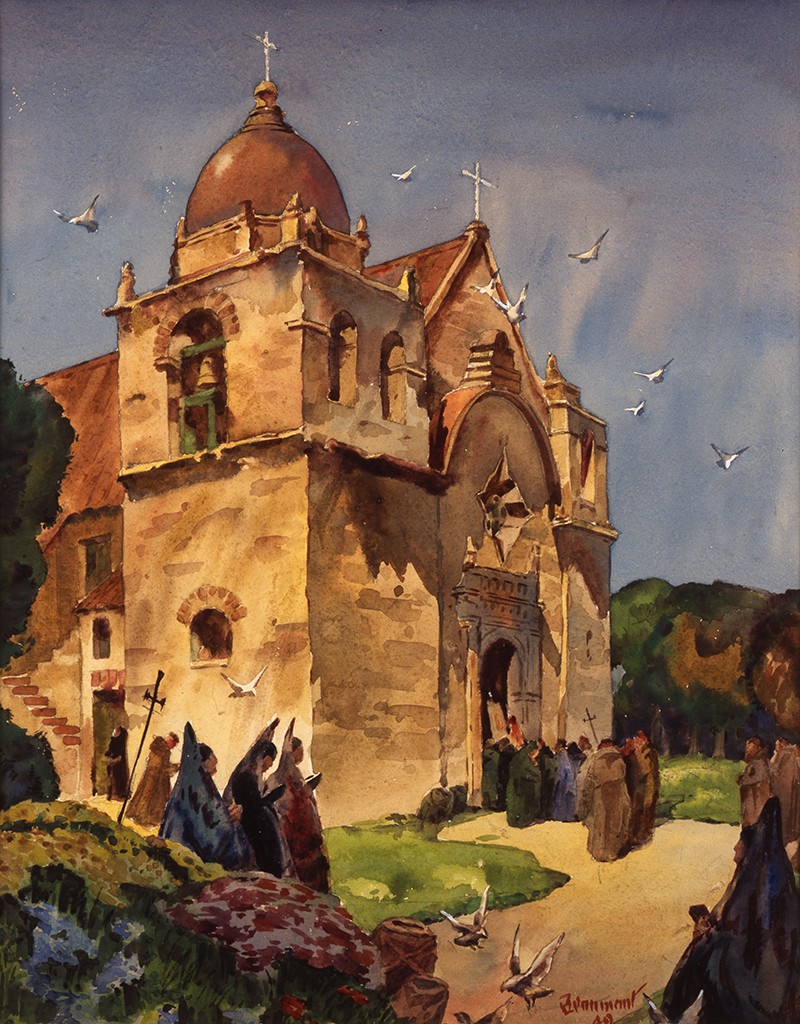 |
| 96.65.1 in its entirety |
Peacetime Clubbing
Following Beaumont’s naval commission during and after World War II, he returned to Los Angeles to reap the benefits of peacetime. The most prestigious reward for his service was his honorary induction into Los Angeles’ most prestigious societies, the Jonathan Club, where he was selected to design the covers of the club’s monthly Jonathan Magazine. After years away from home, he wanted to create works that were grounded in California’s history. He decided upon California’s 21 missions, and by all accounts spent much of 1949 travelling up and down our state’s coast creating sketches of the missions which he would turn into the twelve covers of the 1950 issues. This painting of the Carmel Mission is an interesting one, however. It appears to be a romanticized version of the mission harkening back to a much earlier time when the mission was well-used by Franciscan friars, but the roof betrays a secret.
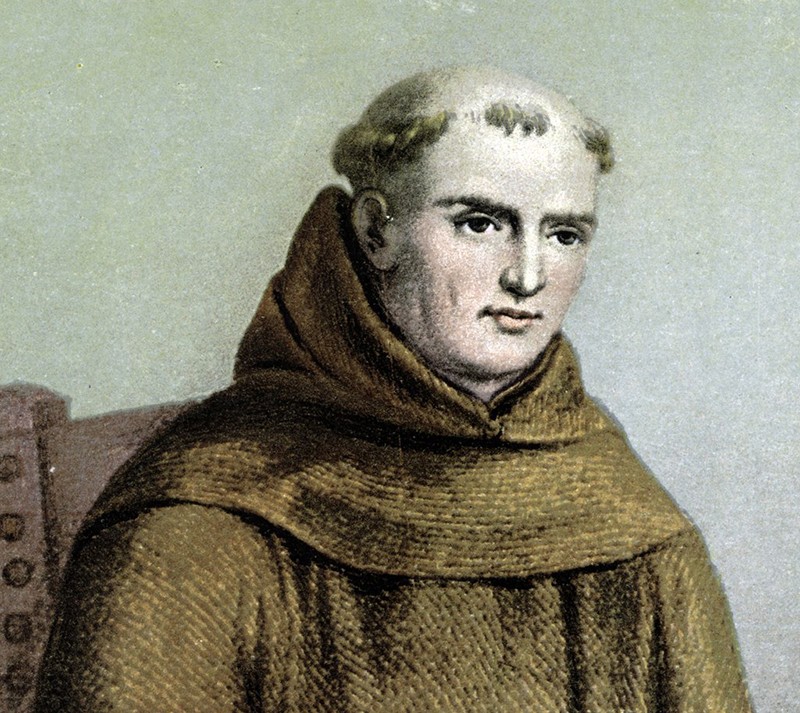 |
| Father Junipero Sera |
Blow the Top Off
Due to the painting’s signature and provenance there is no doubt that the watercolor was painted in 1949, but the roof we see in the painting had not been peaked as we see here since the building was remodeled in 1931. The stone Carmel Mission was first constructed in 1793 on the site chosen by Father Junipero Sera in 1770. In its earliest iteration the roof looks much as it does now, sloping only ever so gently and covered in its entirety in the characteristic red ceramic roof tiles we associate with mission architecture. This was the case until 1833 when the mission was secularized by the government of Mexico. Without the support of the Catholic Church the mission was abandoned and fell into a tragic state of disrepair. In 1852 the roof collapsed. For thirty years the building lay with open wound until, in 1883, funding was secured to place a temporary peaked roof on the mission—the very same Gothic roof as painted by Beaumont. The Gothic style roof served as a covering for the mission between 1883 and 1931, until discontent over its blatant disjointedness grew into a movement to have the original roof restored. By 1937 a more traditional mission style roof had replaced the Gothic one. The building was never used by Franciscan monks during its altitudinal peak, though, meaning that Beaumont’s scene is a fabrication.

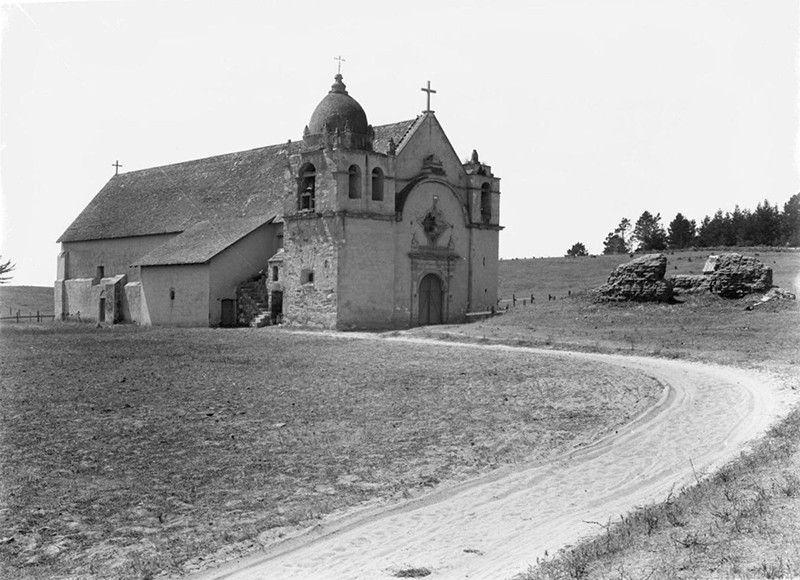 |
| Mission San Carlos Borromeo del río Carmelo, c. 1930 |
Gothic Takeaway
There are a few reasons why Beaumont may have chosen to go with the Gothic roof over the mission’s authentic and recently reinstalled topping. Firstly, it could have been an aesthetic preference of his. The added height does lend a romantic quality of sorts to the painting, and if he had believed the higher roof to have been the original he may have incorrectly used it to add some historic significance to the painting. It is possible too that Beaumont never actually visited the building. Artists of the era were no strangers to painting from photographs or illustrations they had come across in books and most available resources in 1949 still would have shown the building with a low-pitched roof. Whatever the truth of the matter, it has been lost to the waves of time.
Text and images may be under copyright. Please contact Collection Department for permission to use. References are available on request. Information subject to change upon further research.







Comments